This article relies largely or entirely on a single source .(July 2016) |
| Nord 4.2016 to 4.2095 SNCF 2-040.TG | |||||||||||||||||||||||||||||||||||||||
|---|---|---|---|---|---|---|---|---|---|---|---|---|---|---|---|---|---|---|---|---|---|---|---|---|---|---|---|---|---|---|---|---|---|---|---|---|---|---|---|
 Locomotive 4.029 | |||||||||||||||||||||||||||||||||||||||
| |||||||||||||||||||||||||||||||||||||||
| |||||||||||||||||||||||||||||||||||||||
| |||||||||||||||||||||||||||||||||||||||
| |||||||||||||||||||||||||||||||||||||||
Nord 4.2016 to 4.2095 were a class of 0-8-0T locomotives of the Chemin de fer du Nord.
This article relies largely or entirely on a single source .(July 2016) |
| Nord 4.2016 to 4.2095 SNCF 2-040.TG | |||||||||||||||||||||||||||||||||||||||
|---|---|---|---|---|---|---|---|---|---|---|---|---|---|---|---|---|---|---|---|---|---|---|---|---|---|---|---|---|---|---|---|---|---|---|---|---|---|---|---|
 Locomotive 4.029 | |||||||||||||||||||||||||||||||||||||||
| |||||||||||||||||||||||||||||||||||||||
| |||||||||||||||||||||||||||||||||||||||
| |||||||||||||||||||||||||||||||||||||||
| |||||||||||||||||||||||||||||||||||||||
Nord 4.2016 to 4.2095 were a class of 0-8-0T locomotives of the Chemin de fer du Nord.
The eighty locomotives were built from 1930 until 1933, and were used for shunting in yards and depots. The Nord numbered them 4.2016 to 4.2095; in 1938 they passed to the SNCF who renumbered them 2–040.TG.1 to 2–040.TG.80.
They were all scrapped between 1960 and 1967.
| Nord Nos. | SNCF Nos. | Quantity | Manufacturer | Serial Nos. | Year | Notes |
|---|---|---|---|---|---|---|
| 4.2016 – 4.2035 | 2–040.TG.1 – 20 | 20 | ANF, Blanc-Missereon | 278–297 | 1930 | |
| 4.2036 – 4.2045 | 2–040.TG.21 – 30 | 10 | Corpet-Louvet | 1762–1771 | 1930 | |
| 4.2046 – 4.2065 | 2–040.TG.31 – 50 | 20 | ANF, Blanc-Missereon | 311–330 | 1930 | |
| 4.2066 – 4.2075 | 2–040.TG.51 – 60 | 10 | ANF, Blanc-Missereon | 381–390 | 1931 | |
| 4.2076 – 4.2085 | 2–040.TG.61 – 70 | 10 | Corpet-Louvet | 1793–1802 | 1931–32 | |
| 4.2086 – 4.2095 | 2–040.TG.71 – 80 | 10 | ANF, Blanc-Missereon | 392–401 | 1933 | |

Nord 3.1201 to 3.1290 was a class of 90 Pacific (4-6-2) type steam locomotive of the Chemins de Fer du Nord. They served in the north of France and Belgium. The first batch were built in 1923, and last remaining were retired from service in the 1960s. These locomotives were widely known as "Superpacifics" due to their high performance, which made them famous even in Britain.
Jean-Jacques Meyer (1805–1877) was a French engineer, noted for his work with steam engines and steam locomotives.
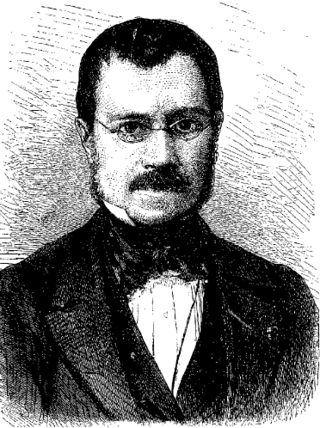
Jules Petiet was a French mechanical engineer who worked on the early development of the French railway network. He was the Chief Engineer of the Chemins de Fer du Nord from 1845, and became a locomotive engineer from 1848. From 1868 until his death, he was head of the prestigious engineering school École Centrale Paris, of which he was also a graduate.
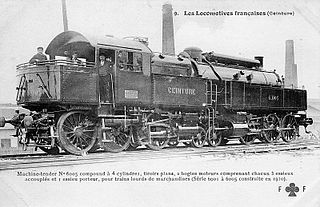
The du Bousquet locomotive was an unusual design of articulated steam locomotive invented by French locomotive designer Gaston du Bousquet. The design was a tank locomotive, carrying all its fuel and water on board the locomotive proper, and a compound locomotive. The boiler and superstructure were supported upon two swivelling trucks, in a manner similar to a Meyer locomotive.

The Saxon Class XI T were German, 0-10-0, tank locomotives with the Royal Saxon State Railways procured for goods train services. The Deutsche Reichsbahn grouped them in 1925 into their DRG Class 94.19-21.

The Prussian T16 locomotives were ten-coupled superheated freight tank locomotives of the Prussian State Railways. They were later renumbered in the 94.2–4 by Deutsche Reichsbahn
Nord 5.1201 to 5.1230 were a class of 2-10-0 “Decapod” steam locomotives of the Chemins de Fer du Nord, designed to handle heavy coal trains. On 1 January 1938, they all passed to the SNCF, who numbered them 2-150.B.1 to 30.
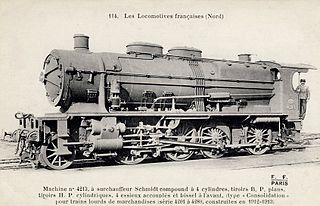
Nord 4.061 to 4.340 were a class of 2-8-0 tender goods locomotives of the Chemins de fer du Nord. At nationalisation on 1 January 1938 they all passed to the SNCF who renumbered them 2-140.A.1 to 2-140.A.280.

Nord 2.231 à 2.305 were suburban 4-4-4T locomotives of the Chemins de Fer du Nord. They were nicknamed "Revolver" due to the appearance of the high-pitched small diameter boilers next to the low water tanks and cabs,
Ceinture 5001 to 5012 were a class of 2-10-2T tank locomotives of the Syndicat d'Exploitation des Chemins de fer de Ceinture de Paris. They were used for hauling freight trains on the Grande Ceinture line in Paris, and later the Région Nord.

Ceinture 4001 to 4005, was a class of five 4-8-0T tank locomotives designed by the Chemins de fer de l'Ouest for the Syndicat d'Exploitation des Chemins de fer de Ceinture de Paris.

Ceinture 81 to 93 were a class of thirteen 4-6-4T ("Baltic") tank locomotives designed by Gaston du Bousquet of the Chemins de fer du Nord for the Syndicat d'Exploitation des Chemins de fer de Ceinture de Paris.

Ceinture 51 to 65 were a class of fifteen 4-6-0T locomotives built in 1902 for the Syndicat d'Exploitation des Chemins de fer de Ceinture de Paris. They passed to the Chemins de fer du Nord in 1934 who renumbered them Nord 3.701 to 3.715. In 1938 they passed to the SNCF who renumbered them 230.TA.1 to 230.TA.6.

Ceinture 21 to 35 were a class of fifteen French 0-6-0T locomotives of the Syndicat d'Exploitation des Chemins de fer de Ceinture de Paris. built in 1899 for pulling suburban passenger trains.
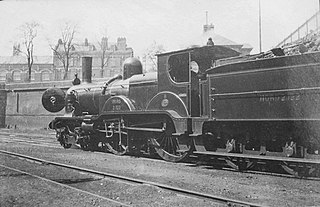
Nord 2.121 to 2.180 were a class of 60 four-cylinder 4-4-0 compound steam locomotives of the Chemins de fer du Nord; they were used as express passenger train locomotives. They were placed in service in 1898 and all but four had been retired by 1933. At the creation of the SNCF in 1938, the surviving locomotives were renumbered 2-220.A.1 to 2-220.A.4
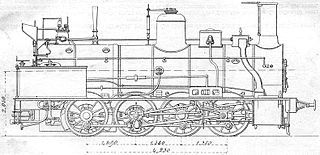
Nord 4.001 to 4.075 and 4.636 to 4.990, also called 180 unités, were 0-8-0 locomotives for freight traffic of the Chemins de Fer du Nord.
Nord 401 to 436, renumbered to Nord 2.401 to 2.436 in 1872, were 0-4-6T Engerth locomotives for mixed traffic of the Chemins de Fer du Nord. The machines were built in 1856–1857 and retired from service in the early 1900s.
Nord 360 to 399, renumbered to Nord 4.361 to 4.400 in 1872, were 0-8-4T Engerth locomotives for freight traffic of the Chemins de Fer du Nord. The machines were built in 1856–1857 and retired from service in 1907–1910.
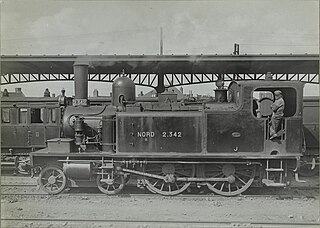
Nord 2.311 to 2.380, were 4-4-0T locomotives for suburban passenger traffic of the Chemins de Fer du Nord. The machines were built in 1892–1893. They were nicknamed "Ravachol" because of the entry into service of the series when the latter was arrested in April 1892.
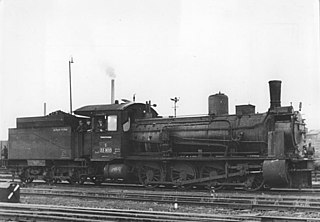
The Prussian G 7.2 was a class of 0-8-0 tender compound locomotives of the Prussian state railways. In the 1925 renumbering plan of Deutsche Reichsbahn, the former Prussian locomotives produced from 1895 to 1911 were given the class designation 55.7–13; while the locomotives of former Mecklenburgische Friedrich-Franz-Eisenbahn (MFFE) locomotives were classified as 55.57.